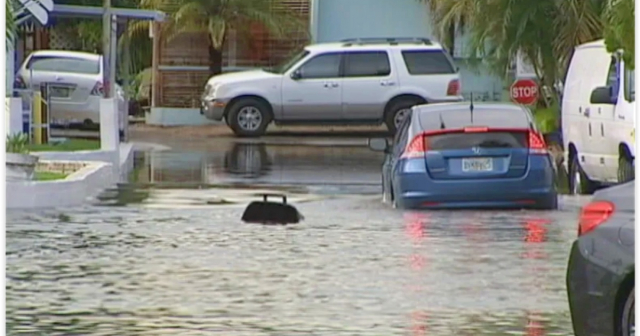The Deputy Prime Minister of Cuba, Inés María Chapman Waugh, toured the streets of the municipality of Santa Isabel de las Lajas in Cienfuegos as part of the government visit that moved to this territory "to correct distortions and reinvigorate the economy."
Among the economic and social entities visited by the leader, she was struck by the existence of several water wells spread throughout the city, commonly used by the population in response to issues with the supply of drinkable water through the distribution network.
PerlavisiónTV followed the Deputy Prime Minister on her tour and filmed the moment when she stopped in front of one of the wells in Santa Isabel de las Lajas and proposed that the local authorities undertake "a project of science and innovation" to improve the conditions of the cistern.
Currently, the residents of Lajas rely on these wells to supply themselves with water. Lacking systems that guarantee the safe and hygienic extraction of water, the residents throw their own buckets tied to ropes inside the wells, which increases the risk of contamination of the source.
Facing the well, Chapman Waugh proposed "conducting a survey of all wells in the city" and using science and innovation to "have a positive impact" on the needs of the population, which suffers from a shortage of clean water.
“We must activate everything possible: hand pump, rope pump, as you explained. Because look, coming here, grabbing it from here also contaminates this, because the person handles it. But if you put there a little hand pump, pretty, painted green… The person can come here, draw their water and take their water,” said Chapman Waugh sweetly.
Attentive to the leader's proposal, the cameras of PerlavisiónTV captured the Deputy Prime Minister explaining how to improve the quality of the scarce water that the residents of Lajas extract from their wells... with a Ciego Montero water bottle in hand!
Chapman Waugh's dissertation by the well was accompanied by gesticulations. "A person can come here, get their water and take their water with them," the minister said, simulating with her arms the motion of pumping water with a lever. In the hand with which the deputy prime minister imaginarily pumped the water, the Ciego Montero water bottle went up and down.
For the residents of Lajas, "a pretty little green hand-held flashlight." For the privileged ones at the Palace, bottled fresh water. "We can organize it," stated the Vice Prime Minister, satisfied with the responsiveness of the government system of Dr. Miguel Diaz-Canel, based on science, innovation, and creative resilience.
Chapman Waugh was unable to find the word "improvised" while talking with his bottle of Ciego Montero in hand. He said the system used by the neighbors ("putting the bucket in directly") was "voluntary". "Spontaneous," members of his entourage helped him, also with deficiencies in their lexicon. The masters of improvisation do not even know the name of their art.
"Believe it or not, here is Vice Prime Minister Chapman asking Cubans to drink water from a well in Cienfuegos, while she walks with a bottle in her hand... it almost seems like a joke," activist Magdiel Jorge Castro stated on his social media, sharing the video of the bizarre scene starred by Chapman Waugh during a government visit that provided unforgettable moments.”
Chapman Waugh's image in front of the well synthesizes the Cuban regime's state of disorientation. Costly government visits that don't fix anything, disconnect with the population's needs, "chewing the fat" instead of providing solutions, normalization of poverty and inequality... Díaz-Canel's executive is gradually drying up Cuba's well, while improvising solutions with water bottles in hand.
Where did the 102 million 300 thousand dollars donated by Kuwait end up?
The precarious state of the hydraulic infrastructure in Cuba today leads to questioning without reservations, where did the 102 million 300 thousand dollars provided to the Cuban state by the Kuwaiti Fund for Arab Economic Development (Kfaed) end up?
According to the officialist agency ACN, the island's links with the mentioned fund date back more than two decades (since 2003) and - in that period of time - cooperation granted five credits for the implementation of rehabilitation works on water supply, sewerage, storm drainage networks, among others.
Of the amount given to the state-owned National Institute of Hydraulic Resources (INRH), 84.7 percent has been executed to date, which "benefited" one million 454 thousand inhabitants of the provinces of Santiago de Cuba, Holguin, and Havana.
However, recently published data confirm that thousands of people do not have daily water supply, largely due to power outages, but other causes also include drought, lack of distribution network, leaks, and corruption, among others.
Although the regime authorities refer to the extensive investment program they are implementing to ensure water supply to the population, the obsolescence of the infrastructure is currently a persistent problem. Outdated equipment breaks down on a daily basis, causing interruptions in the supply cycles, which in turn increases the population's discontent.
Around 700,000 people in Cuba do not receive water daily due to power cuts, as the hydraulic sector is the second largest consumer of electricity after the demand of the population, according to Granma.
Data registered last year indicates that around two million people receive the service every three days or more, and there are 478 population settlements that lack waterworks networks either partially or entirely. All of this directly affects the quality of life and health, as it forces reliance on alternative systems to obtain the precious liquid.
What do you think?
COMMENTFiled under:
